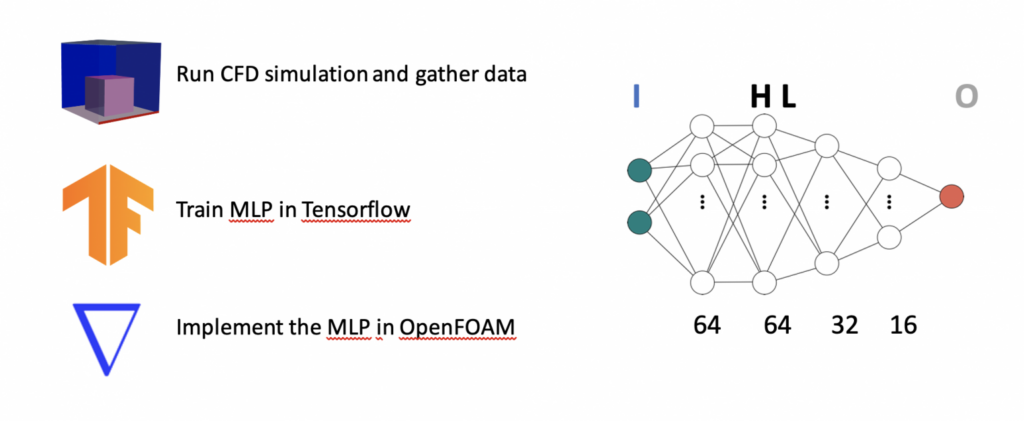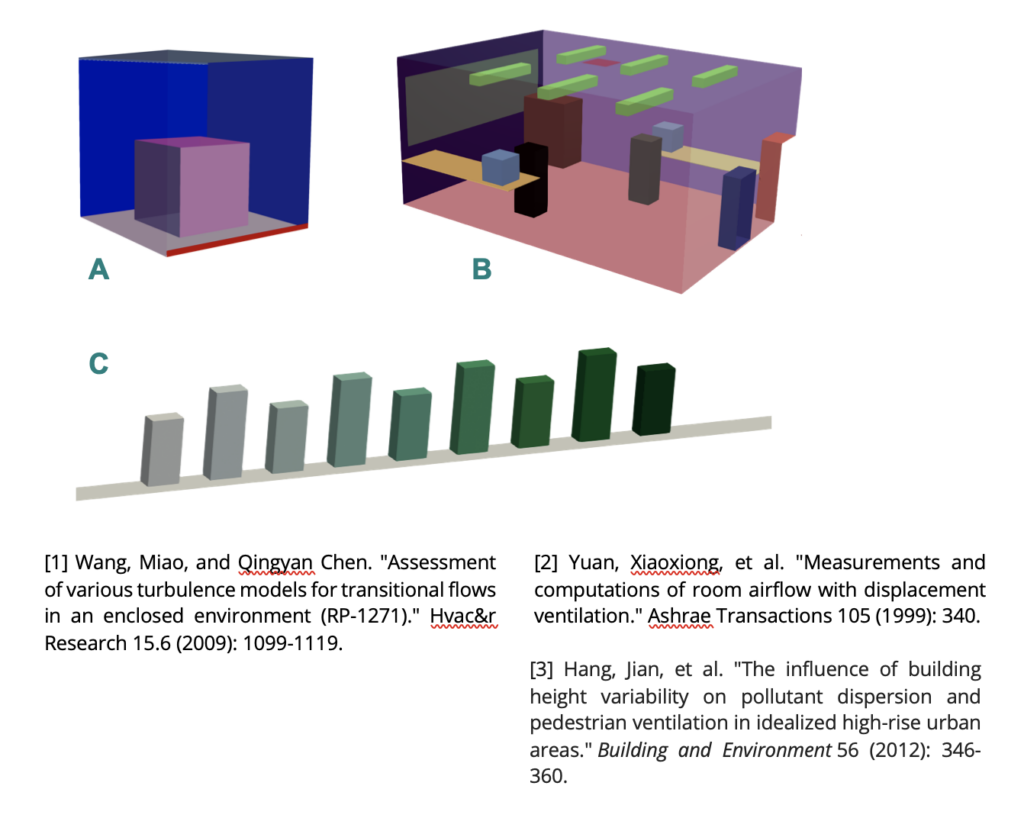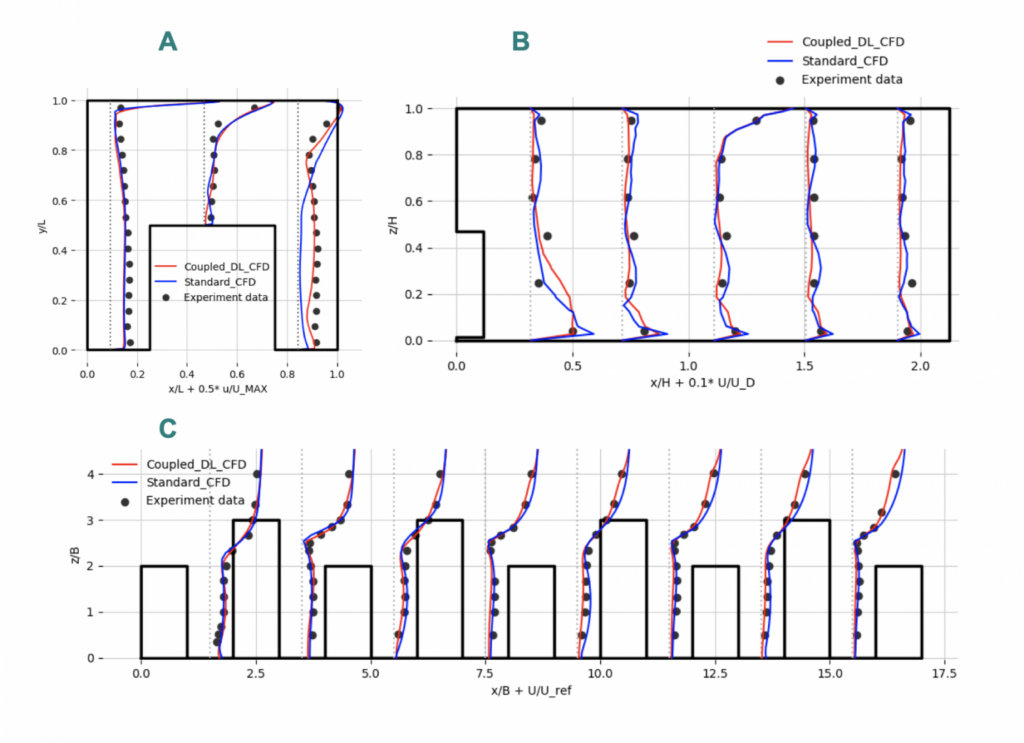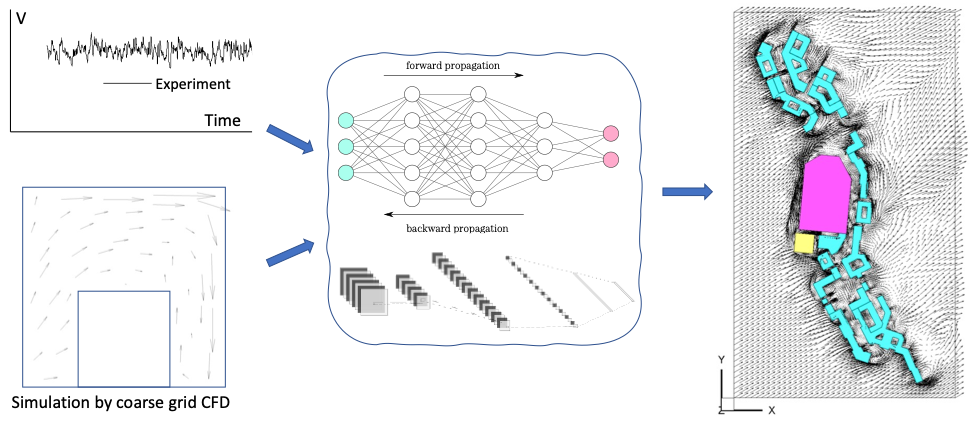About the project
Objective
This project plans to develop AI-based CFD simulation to realise accurate and fast predictions of urban climate and the built environment. This study will focus on two aspects of developing the AI-based model: the AI-based turbulence model by learning the “behaviour” of turbulence and the AI-based surrogate model. To train and test the artificial neural network (ANN) model, this project will collect experimental data on indoor and outdoor airflow from on-site and lab measurements. In terms of accuracy, the predictions by AI-based models are expected to be within a 10% difference from that of conventional CFD simulations. Regarding efficiency, AI-based models are expected to be at least ten times faster than conventional CFD simulations.
Background
The urban climate determines the environmental quality in urban areas by removing or dispersing the airborne pollutants generated by human activities or providing cleaner external (rural) air. Studying urban climate and its impact on built environments would help provide guidelines and tools for urban planners and building engineers to evaluate the environmental quality in our living space. Given the practical difficulties of performing city-scale or multi-scale experiments, accurate simulation and fast decision-supporting tools are urgently needed to provide pollutant mitigation strategies for researchers, urban planners, environmental engineers and decision-makers. The existing development of such tools has been plagued mainly by three scientific challenges: computational speed, accuracy, and robustness.
Crossdisciplinary collaboration
The researchers in the team represent the KTH ABE School, the Department of Computer Science and Engineering, and the Blekinge Institute of Technology.
Activities & Results
Find out what’s going on!
Coupled framework
We develop a coupled CFD – deep learning framework where we substitute only the turbulence model of CFD with an MLP

Flow fields from literature
A. Room simulation mixed convection indoor airflow [1]. Data used to train the MLP.
B. Office simulation with displacement ventilation [2].
C. Building array simulation outdoor airflow [3].

Compared to standard CFD simulation using RNG k-ε model the new coupled framework is:
A. 5 % faster*
B. 7 % faster*
C. 2 % faster*

Download presentation from Open Research Day 21 April as pdf.
Publications
We like to inspire and share interesting knowledge!
Calzolari, G. and Liu, W. Deep learning to replace, improve, or aid CFD analysis in built environment applications: a review. Building and Environment, 2021, 206, 108315. https://doi.org/10.1016/j.buildenv.2021.108315.
Calzolari, G. and Liu, W. A deep learning-based zero-equation turbulence model for indoor airflow simulation. Proceedings of the 5th International Conference on Building Energy and Environment (COBEE 2022), Paper No. 1196, Montreal, Canada.


